The Canadian Football League (CFL) has always prided itself on being, well, Canadian. However, that hasn’t stopped it from trying to expand its global appeal, particularly south of the border. Indeed, American and Canadian football have a long intertwining history, so the appeal of the northern version of the sport is presumably baked right into the psyche of fans in the States.
North American football as we know it today traces its roots back to the 1870s when the rugby teams from Harvard and Montreal’s McGill University played a game using new rules developed by the latter . Some accounts say that Harvard’s soccer team showed up in Montreal instead of the rugby team, and they decided to split the difference and play under combined rules.
Use code "CFLUSA" to save 20% on our entire collection of CFL shirts.
In any case, football was created with slightly different rules being developed on both sides of the border. The sport quickly became popular with colleges and universities and, eventually, at the professional level. In the U.S. the professional game was spearheaded by the National Football League (NFL), while in Canada, it was the Western Interprovincial Football Union and the Interprovincial Rugby Union. The two unions combined to become the CFL in 1958.
For many years the CFL competed with the NFL for players from American colleges. However, by the 1970s, with the (brief) emergence of the World Football League (WFL) and, more importantly, free agency in the NFL, the gulf between the leagues widened considerably. Still, the CFL soldiered on and received exposure in the U.S. starting in the late ‘70s and early ‘80s as cable TV networks, starved for programming, began airing CFL games.
In the U.S., the league was marketed as a vehicle for recognizable college stars who weren’t drafted or didn’t make it onto an NFL roster. The regular season started in July, well ahead of the NFL and the NCAA, giving the CFL added appeal to football-starved Americans. Still, the CFL struggled, at one point losing its Montreal franchise right before the start of the 1987 season. The remaining eight teams, except Edmonton, were also facing financial challenges and fan apathy.
In the early 1990s, a new plan was hatched. At the behest of Toronto Argonauts owner Bruce McNall and Calgary Stampeders owner Larry Rykman, a new commissioner, Larry Smith, was installed. It was understood that Smith would pursue expansion into the United States, with the first step being an exhibition game in Portland, Oregon between the Argos and Stamps, which drew 15,000 fans in June 1992.
CFL owners were encouraged, even though the NFL’s attempt at a spring/summer football league, the World League of American Football (WLAF), had just shuttered all its North American teams in favor of a European-based circuit.
Applications were accepted by the CFL from over 20 U.S. cities. The first two clubs welcomed into the CFL fold were former WLAF squads: the Sacramento Surge (renamed the Gold Miners) and the San Antonio Riders (renamed the Texans). Only Sacramento made it to the start of the 1993 campaign as an ownership dispute caused San Antonio to withdraw.
In 1994, the Gold Miners were joined by the Las Vegas Posse, the Shreveport Pirates, and the Baltimore CFL Colts (later renamed the Stallions). The latter would become far and away the most successful U.S.-based team, on the field and at the gate. In their two seasons in the league, they went to the Grey Cup twice, winning in one.
Las Vegas, on the other hand, was a disaster. A losing record and low attendance provided for a quick end to Canadian football in the Meadows. A group from Miami tried to buy the club, rename it the Manatees, and move it to South Florida. The deal fell through, though.
The Gold Miners, dissatisfied with their stadium situation, moved to San Antonio for the 1995 season and became the Texans. The Memphis Mad Dogs and Birmingham Barracudas also joined the league. However, the American teams wouldn’t see the 1996 season.
During the CFL’s U.S. run, attendance early in the season was respectable. By September, though, the U.S. clubs saw fans flee for college and high school football games. Financial losses mounted. The final blow came when Art Modell, owner of the NFL’s Cleveland Browns, announced his intention to move his team to Baltimore, home of the CFL’s most successful American team.
With the other teams bleeding red ink, the American operation was halted. Four U.S. teams folded, while Baltimore moved to Montreal to re-establish the Montreal Alouettes franchise, dormant since 1987.
Even though it only lasted three seasons, the American experiment accomplished a few things. Despite teams in both countries losing money, the influx of expansion cash kept the Canadian teams from going under. Well, except the Ottawa Rough Riders, who collapsed after the 1996 season. The American teams also helped give the CFL gain more exposure south of the border and sewed the seeds for the league’s rebound in the 21st-century.



